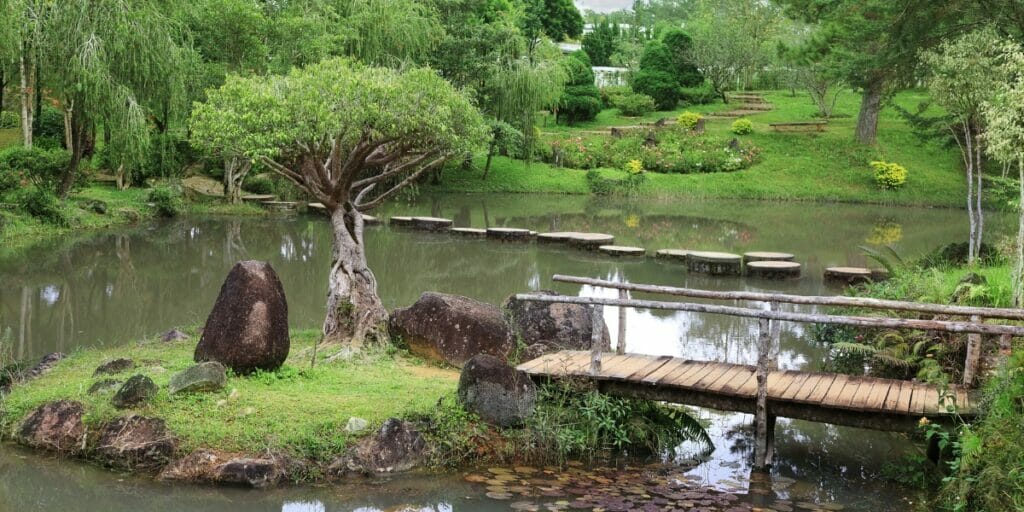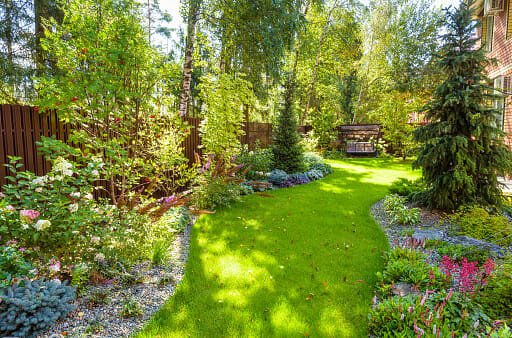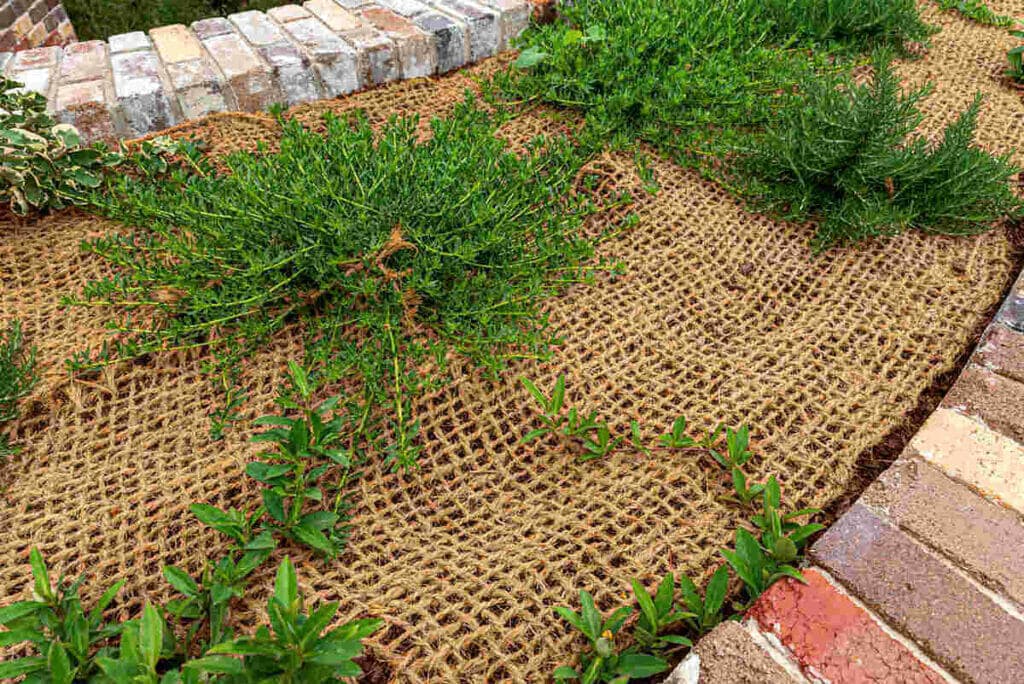Welcome to our article on the basic elements of landscape design.
In this comprehensive guide, we will explore the crucial aspects that contribute to the creation of stunning outdoor spaces.
From the importance of site analysis to the utilization of plants and hardscape features, we will delve into the intricacies of designing for visual impact, balance, unity, functionality, and practicality.
Whether you are a seasoned professional or a budding enthusiast, this article is tailored to provide you with the knowledge and expertise you seek.
Key Takeaways
– Site analysis is essential for understanding the physical and environmental aspects of a space and working within its limitations.
– Plant selection and hardscape materials play a crucial role in determining the overall look and feel of a landscape design.
– Strategic use of color and texture enhances the visual impact and aesthetic appeal of the design.
– Creating balance and unity through the placement and integration of elements contributes to a cohesive and harmonious design.
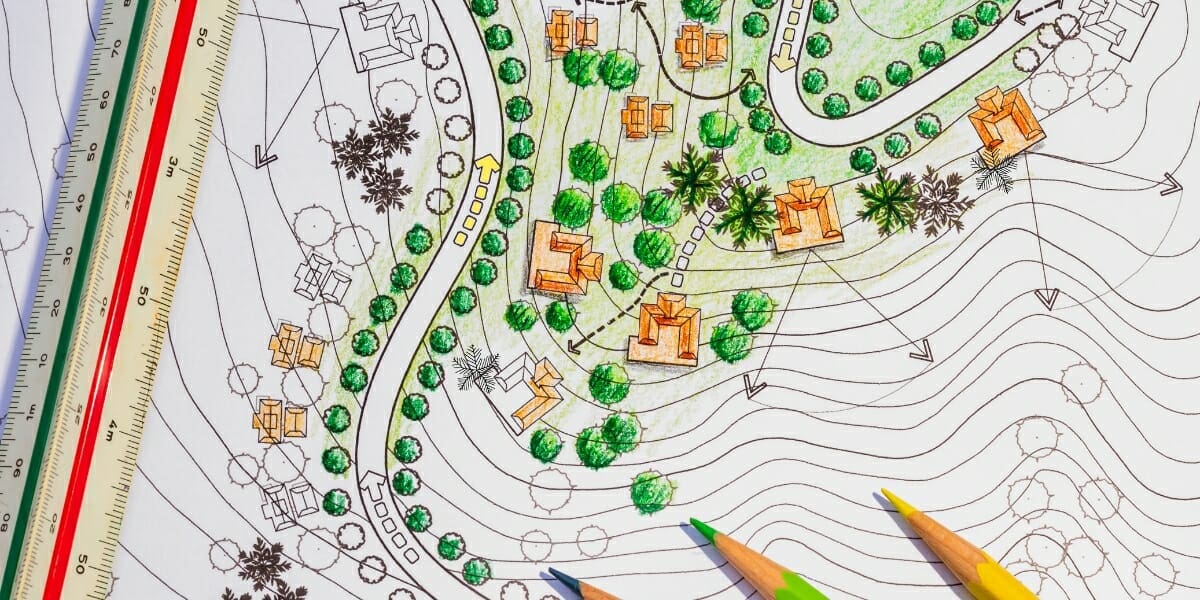
The Importance of Site Analysis
The thoroughness of site analysis is crucial in landscape design as it provides a comprehensive understanding of the physical and environmental aspects that influence the project’s success.
Assessing site constraints, such as existing structures, topography, and drainage patterns, allows landscape designers to work within the limitations of the site and create a design that harmonizes with the surroundings.
Understanding soil composition is another key aspect of site analysis. Different types of soil have varying drainage capabilities and nutrient content, which directly affect the choice of plants and their growth potential. By analyzing the soil’s texture, pH level, and fertility, landscape designers can determine the appropriate plants to use and implement necessary soil amendments.
A thorough site analysis ensures that every decision in the landscape design process is informed by a deep understanding of the site’s unique characteristics, resulting in a successful and sustainable project.
Designing With Plants and Hardscape Features
When designing a landscape, it is important to carefully consider the placement of plants and hardscape features in order to create a cohesive and visually appealing design.
Plant selection plays a key role in landscape design as it determines the overall look and feel of the space. It is crucial to choose plants that are well-suited to the climate, soil conditions, and maintenance requirements of the area.
Additionally, hardscape materials such as stone, wood, and concrete can be used to create pathways, walls, and other structural elements that add functionality and aesthetic appeal to the landscape. The selection of hardscape materials should be based on durability, cost, and compatibility with the overall design concept.
Utilizing Color and Texture for Visual Impact
By strategically combining different colors and textures, landscape designers can create visual impact and enhance the overall aesthetic appeal of the outdoor space. Utilizing color and texture effectively in landscape design is crucial for enhancing curb appeal and creating focal points that draw attention to specific areas or features.
One way to achieve this is by incorporating a variety of plant species with different foliage colors and textures. For example, pairing plants with vibrant flowers against those with contrasting foliage can create a visually striking display. Additionally, incorporating hardscape features such as textured paving stones or decorative gravel can add visual interest and depth to the design.
To further enhance the impact of color and texture, designers can also consider the seasonality of plants, selecting species that bloom or change foliage colors at different times throughout the year. This ensures that the outdoor space remains visually appealing and engaging throughout the seasons.
Creating Balance and Unity in the Design
Achieving visual harmony in landscape design involves the careful integration of various elements to create a sense of balance and unity. To create a well-balanced and unified design, it is important to consider the following:
– Creating focal points: By strategically placing focal points, such as sculptures or water features, you can draw the viewer’s eye and create a sense of interest and depth in the landscape.
– Harmonizing elements: Ensuring that the different elements in the design, such as plants, hardscape materials, and colors, work together harmoniously is crucial. Consider the scale, texture, and color of each element and how they interact with one another.
– Incorporating repetition: Repeating certain elements throughout the design can help create a cohesive and unified look. This can be done by using the same plant species, repeating patterns in hardscape materials, or using similar color schemes.
Incorporating Functionality and Practicality Into the Landscape
To ensure that a landscape design is both functional and practical, it is essential to incorporate elements that serve a purpose and can be easily maintained. Efficient space utilization is a key aspect of creating a landscape that not only looks aesthetically pleasing but also maximizes the usability of the outdoor area.
This can be achieved by carefully planning the layout, considering the needs and activities of the users, and strategically placing elements such as seating areas, pathways, and storage spaces.
In addition, sustainable design techniques should be integrated into the landscape to promote environmental responsibility and reduce maintenance requirements. This can include using native plants that are well-suited to the local climate, implementing water-saving irrigation systems, and incorporating renewable materials into hardscape elements.
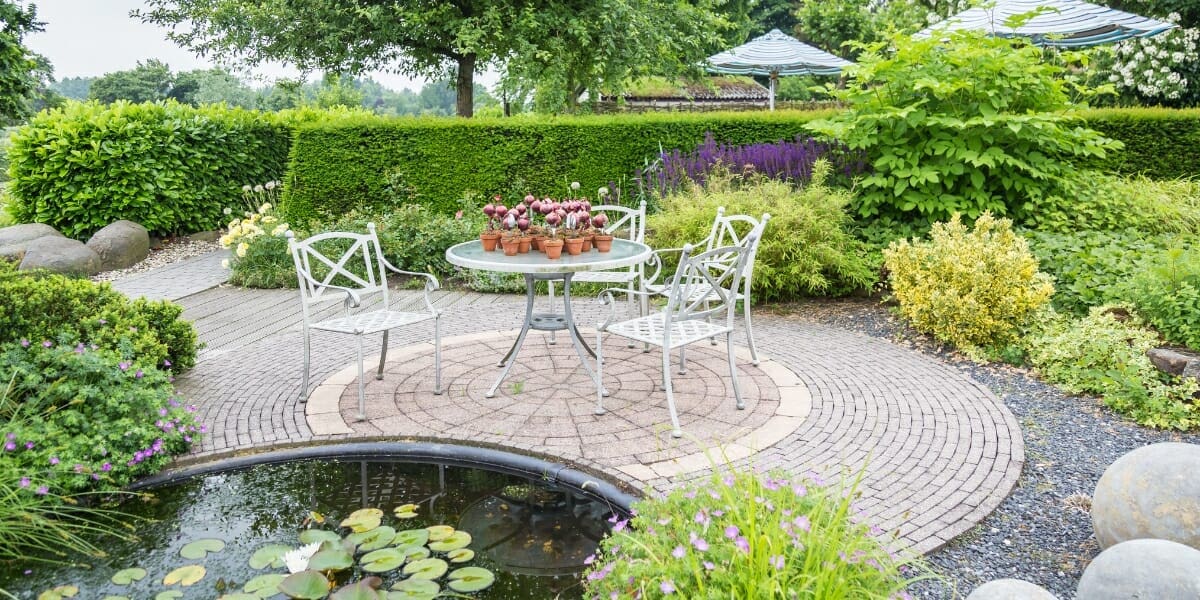
Frequently Asked Questions
What Are Some Common Mistakes to Avoid When Conducting a Site Analysis for Landscape Design?
When conducting a site analysis for landscape design, it is important to avoid common mistakes that can hinder the process. By thoroughly assessing the site and considering factors such as soil conditions and sun exposure, designers can ensure the success of their project.
How Can I Ensure That the Plants and Hardscape Features I Choose Will Work Well Together in the Design?
Choosing compatible elements and selecting cohesive materials are crucial for ensuring that plants and hardscape features work well together in a landscape design. This requires careful consideration of factors such as color, texture, scale, and maintenance requirements.
What Are Some Strategies for Using Color and Texture to Create Visual Impact in a Landscape Design?
Utilizing carefully chosen color schemes and texture combinations is an effective strategy for creating visual impact in landscape design. By considering the harmonious interplay between colors and the variation in textures, a captivating and cohesive design can be achieved.
Can You Provide Examples of How to Achieve Balance and Unity in a Landscape Design?
Achieving balance and unity in a landscape design can be done through the use of contrasting elements and repetition of similar shapes or colors. This creates visual harmony and a sense of cohesion in the overall design.
How Can Functionality and Practicality Be Incorporated Into a Landscape Design Without Sacrificing Aesthetic Appeal?
When designing a landscape, it is essential to prioritize functionality and practicality while maintaining aesthetic appeal. By carefully selecting and arranging elements, such as pathways, seating areas, and plantings, a cohesive and visually pleasing design can be achieved.
Conclusion
In conclusion, landscape design is a complex process that requires careful consideration of various elements.
By conducting a thorough site analysis, incorporating a mix of plants and hardscape features, utilizing color and texture, achieving balance and unity, and incorporating functionality, a visually appealing and practical landscape can be created.
Adhering to these basic principles will ensure a successful and harmonious outdoor space that brings beauty and functionality to any environment.

